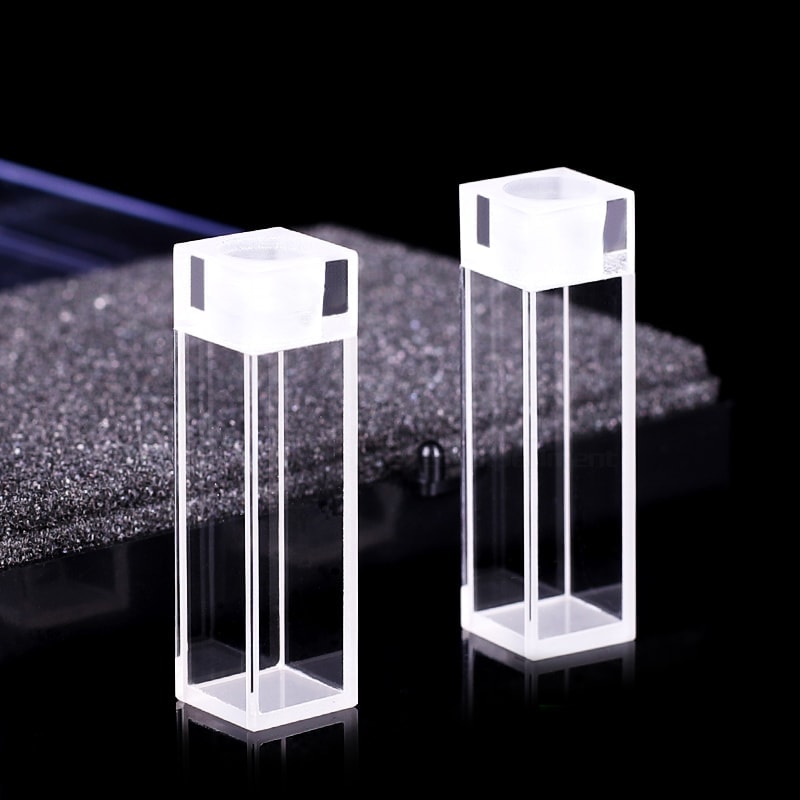The Affect of Quartz Vials on Test Strength in Research Checks
The Affect of Quartz Vials on Test Strength in Research Checks
Blog Article

The Advantages of Cuvettes and Quartz Vials in Clinical Research
In medical study, the reliability and reliability of proportions are paramount, particularly in fields like spectroscopy, substance analysis, and biology. One important component that guarantees accuracy in these studies is the cuvette, particularly quartz vial. Knowledge the benefits of cuvettes and the features of applying quartz vials can considerably impact the outcome of experiments and lab work.
Detail in Spectroscopy
Cuvettes are necessary for holding water samples in a variety of diagnostic instruments, such as spectrophotometers. They assess the absorbance or sign of gentle through a sample, and the cuvette serves whilst the pot for the trial throughout analysis. The measurement and product of the cuvette enjoy a crucial role in ensuring the accuracy of the measurements. Quartz vials, especially, provide excellent optical clarity, allowing for precise gentle transmission across a wide variety of wavelengths, including ultraviolet (UV) light. That makes quartz vials a great choice for spectroscopic tests, wherever accuracy is critical.
Longevity and Compound Opposition
Quartz vials stand out because of their durability and weight to harsh chemicals. Unlike plastic cuvettes, quartz vials are less inclined to degrade or respond with chemicals in the taste, ensuring that the outcome of the try remain unaffected by potential contamination. This characteristic makes quartz vials especially useful in settings where aggressive solvents or large conditions are involved. Their ability to resist severe conditions without reducing the integrity of the trial is among the main causes they're favored in lots of lab applications.
Accuracy in Size and Shape
How big a cuvette is not a one-size-fits-all situation. The dimension of the cuvette, such as for instance their way size, impacts the amount of the trial and the amount of mild that moves through. Picking the correct cuvette measurement for the specific experiment ensures that the answers are perhaps not skewed because of under or over-concentration of the sample. Quartz vials come in many different measurements and designs, allowing analysts to select the absolute most suitable choice based on the needs of these experiment. That freedom plays a role in more correct knowledge and permits better control over fresh conditions.
Transparency and Light Sign
Quartz is noted for their exemplary transparency, especially in the ultraviolet (UV) and apparent gentle spectra. This makes quartz vials perfect for used in devices that want obvious visual trails, such as for example UV-Vis spectrophotometers. The remarkable gentle transmission homes of quartz make sure that the mild passes through the test with small scattering or absorption, ultimately causing more appropriate readings. For tests that need high detail, quartz vials give a definite gain around other materials.
Long-Term Stability
When employed in study laboratories, it is vital to have trusted methods that keep their strength around time. Quartz vials aren't just chemically immune but in addition very durable, meaning they are less inclined to knowledge wear and tear. This long-term stability guarantees that scientists may use quartz vials for lengthy intervals without worrying all about deterioration or the necessity for repeated replacements, adding to cost-effectiveness in the extended run.
To conclude, both cuvettes and quartz vials offer a selection of advantages that enhance the standard and accuracy of laboratory experiments. From their remarkable visual clarity for their chemical weight and toughness, these methods are indispensable in scientific research. By choosing the proper cuvette size and applying quartz vials, scientists can assure accurate sizes and achieve more reliable effects in their studies. Report this page